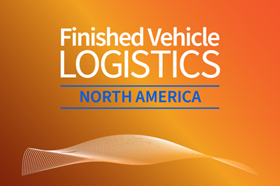Red Sofa interview | Nissan’s Todd Myers on optimising FVL through data, digital tools and holistic planning
Todd Myers, director of finished vehicle logistics North America at Nissan, shares how the carmaker is continuously optimising logistics with data-led tools, system-wide planning and a focus on agility, skills and visibility.
Related video
-

Red Sofa | Nissan’s Gerardo de la Torre on using digital tools to improve supply chain visibility
-

Red Sofa | International’s Tony Stinsa on EV truck delivery challenges
-

Red Sofa | GM applies start-up agility to EV logistics strategies
-

Red Sofa | Anu Goel on how VW is reshaping logistics for US-Mexico flows
-

Finished Vehicle Logistics North America | Highlights
At the Finished Vehicle Logistics North America 2025 conference, Nissan’s Todd Myers joined Automotive Logistics on the Red Sofa to discuss how the carmaker is engineering a more agile, efficient and intelligent logistics network in the face of constant disruption and rising complexity.
Leading both finished vehicle logistics and logistics procurement across North America, Myers described how Nissan focuses on key performance metrics to guide optimisation, including free cash flow, total delivered cost and cost per unit, as well as operational performance based on safety, quality, cost and time. However, he stressed the importance of balancing these indicators with wider business objectives.
According to Myers, increasing the velocity and responsiveness of the outbound network depends as much on people and skills as it does on technology. Nissan is investing in workforce capabilities, developing what Myers calls “full-stack analysts” who can operate at both the front and back end of optimisation work.
He also pointed to gaps in digital maturity and data access across the supply chain that continue to hold back transformation. “There are still some skill gaps – in the company and across the industry – and we’re migrating toward full-stack analysts who can cover the front-end and tail-end of the optimisation. You’ve also got data democratisation, that’s still lacking,” he said. “Then from a physical standpoint, it’s the haulaway aspect, there’s opportunity there for network optimisation and improvement.”
While Nissan uses a number of market-available optimisation platforms, Myers noted that the carmaker relies heavily on in-house digital tools tailored to its own processes. “Most OEMs have customised niche processes, so you end up developing a lot in-house,” he explained.
Those tools include visualisation platforms such as Tableau and PowerBI, Python scripting for automation and advanced analytics, and simulation platforms like CPLEX and Gurobi to run high-speed scenario planning.
With disruption a permanent fixture in global vehicle logistics – from natural disasters to policy shifts like tariffs – Nissan’s approach involves a layered planning structure: strategic, tactical and operational. That allows the company to respond continuously and recalibrate specific nodes of the network in near real-time. “You’re really doing continuous optimisations on some element or some node of the supply chain any given time,” Myers said.






